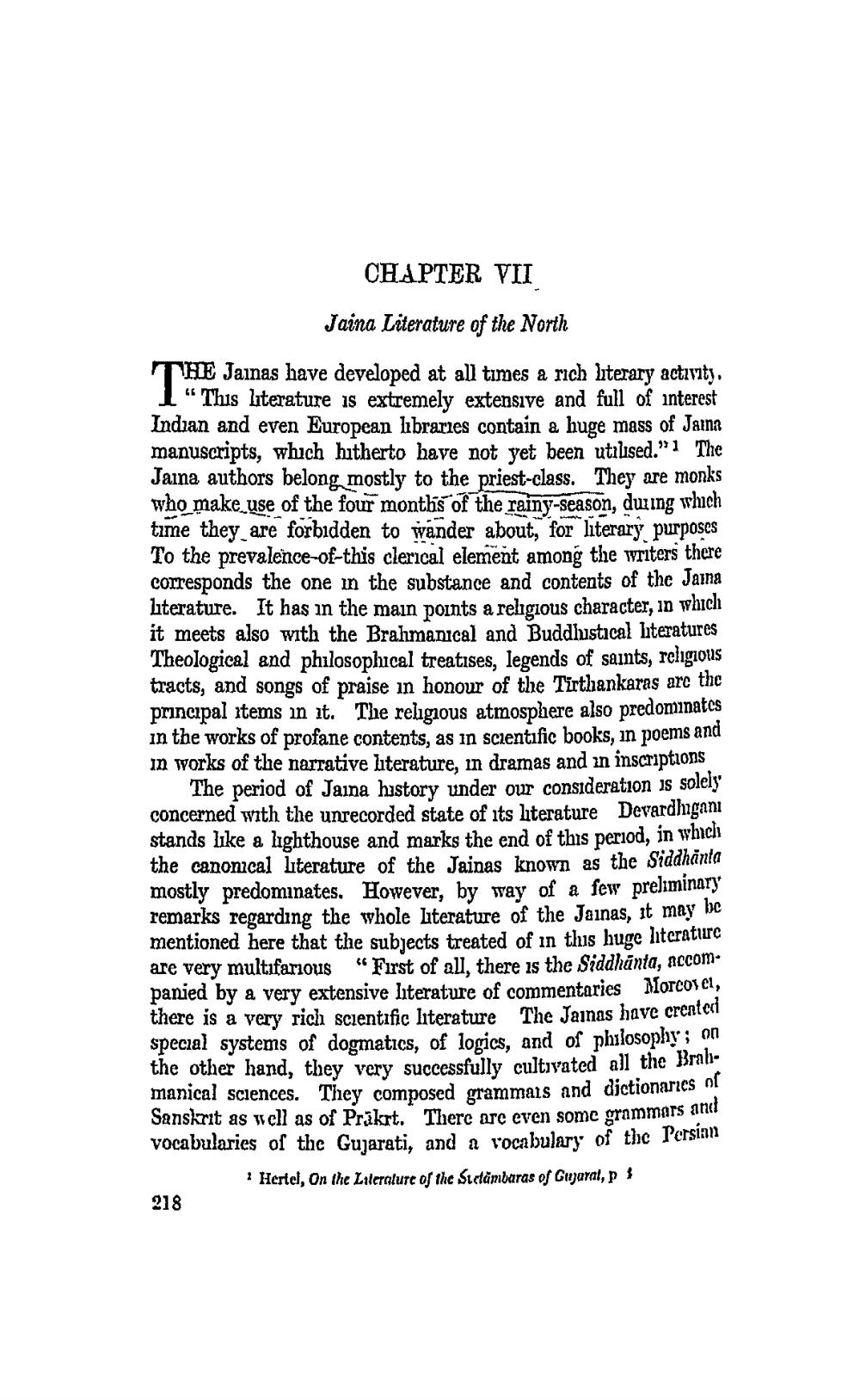________________ CHAPTER VII Jaina Literature of the North THE Jainas have developed at all times a rich literary activity, 1 "This literature is extremely extensive and full of interest Indian and even European libraries contain a huge mass of Jaina manuscripts, which hitherto have not yet been utilised."1 The Jaina authors belong mostly to the priest-class. They are monks who make use of the four months of the rainy season, during which time they are forbidden to wander about, for literary purposes To the prevalence-of-this clerical element among the writers there corresponds the one in the substance and contents of the Jaina literature. It has in the main points a religious character, in which it meets also with the Brahmanical and Buddhistical literatures Theological and philosophical treatises, legends of saints, religious tracts, and songs of praise in honour of the Tirthankaras arc the principal items in it. The religious atmosphere also predominates in the works of profane contents, as in scientific books, in poems and in works of the narrative literature, in dramas and an inscriptions. The period of Jaina history under our consideration is solely concerned with the unrecorded state of its literature Devardhigani stands like a lighthouse and marks the end of this period, in which the canonical literature of the Jainas known as the Siddhanta mostly predominates. However, by way of a few preliminary remarks regarding the whole hterature of the Jainas, it may be mentioned here that the subjects treated of in this huge literature are very multifarious "First of all, there is the Siddhanta, necompanied by a very extensive literature of commentaries Morcove, there is a very rich scientific literature The Jainas have createn special systems of dogmatics, of logics, and of philosophy : on the other hand, they very successfully cultivated all the rate manical sciences. They composed grammals and dictionaries Sanskrit as well as of Prakrt. There are even some grammars vocabularies of the Gujarati, and a vocabulary of thc l' Hertel, On the Literature of the Stetambaras of Gujaral, p 218




